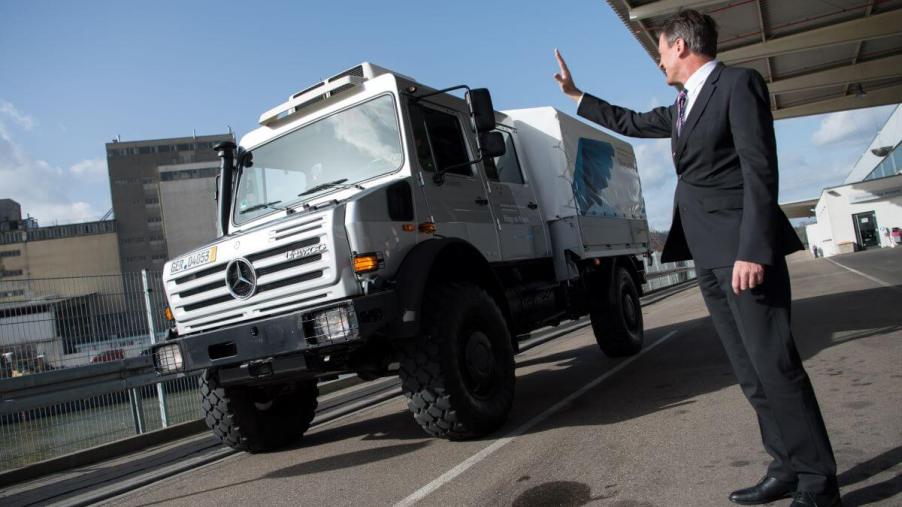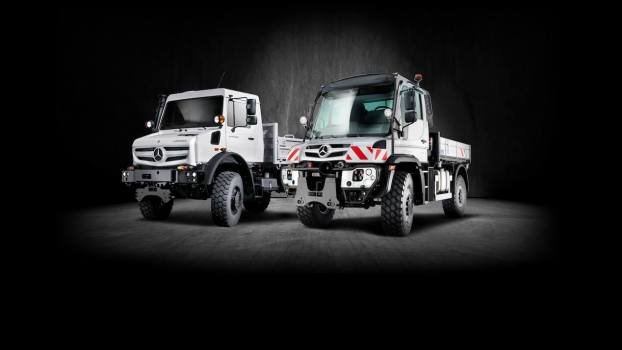
What Company Made the First Unimog Tractor?
During your travels, you might notice a peculiar-looking vehicle. It’ll have tall off-road tires, a front-mounted cab, and a rear flatbed. What you’re seeing is a Unimog. So, what is a Unimog?
The massive Unimog ATV first appeared in the late 1940s, designed for agricultural purposes and to go where regular tractors couldn’t. It had an array of unique features—like the ability to power auxiliary equipment—and built a following with its indispensable utility.
Today, militaries, fire departments, and farmers use the Mercedes Unimog across the globe. However, Mercedes-Benz didn’t build the first Unimog. Here are the origins of the Unimog and who made the first models.
What is a Unimog truck?
In its brief history of the Unimog, Expedition Meister describes how it came to be. After World War II, farmers needed a vehicle to power equipment, handle challenging terrain, and carry payloads. The Unimog met those requirements.
The Unimog—”Universal Motor Gerat” or “Universal Motor Device”—featured towering equal-sized wheels, all-wheel drive, and power take-off to power saws and agricultural equipment. With its flexible frame and portal axles, this German off-roader could go almost anywhere.
With a small cabin mounted in front of a truck bed, the Unimog had a look like nothing else. Pure utility was the name of the game, and the result was a quirky appearance. Over the years, the Unimog truck demonstrated its indispensable design, with 12 generations produced, as detailed by Motor1.
The first-generation Unimog truck: 1947-1951
Today, Unimogs are synonymous with their manufacturer: Mercedes-Benz. However, that hasn’t always been the case. German tool manufacturer Boehringer produced the first 600 Unimogs, known as the 70200 Series, before Mercedes took over in 1951. Those initial vehicles were built entirely by hand before switching to mass production in later versions.
The 70200 Unimog truck looked like a cross between a tractor and a pickup. The tall, narrow wheels carried a long ladder chassis with a pickup-like cabin at the front. Ample ground clearance gave it strong off-road ability, and a convertible top provided comfort in varying weather.
A Mercedes-Benz four-cylinder diesel engine gave the 70200 mule-like pulling power, and differential locks ensured grip in the muddiest conditions. A flexible ladder frame was central to the Unimog’s off-road prowess, a feature that continues to this day.
The Mercedes-Benz Unimog today
Today, the Mercedes-Benz Unimog U4000/U5000 continues the model’s storied tradition, proving itself in applications from desert races to long-range expeditions. That’s because the core design is so versatile, and with decades of evaluation, keeps improving.
What engine is in a Unimog? The current generation taps into Mercedes-Benz diesel expertise with Euro IV-certified engines that are efficient and clean burning. With nearly 600 lb-ft of torque available, these powerplants can handle any task. An electronic automated transmission (AutomaticShift) has eight forward and six reverse gears, along with eight special off-road ratios. Additionally, front and rear differential locks help the tires claw at demanding terrain.
What is the cost of a Unimog? The price of a truck varies depending on the year and model. If you’re looking for a used Mercedes Unimog for sale in the U.S., you can’t purchase a new one but could find an excellent example on the pre-owned market. Classic.com has helpful info to find a Unimog that’s right for you.




